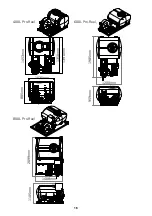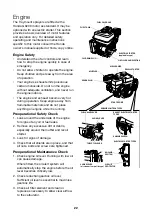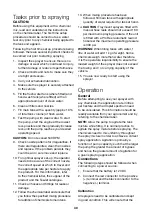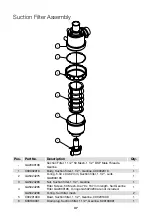
30
Tasks prior to spraying
CAUTION:
Before using this equipment with a chemical
mix, read and understand, the instructions
on the chemical label. The first time setup
procedure should be carried out as a water
test only prior to any chemical being applied to
the tank and applied.
Following the first time set up procedure being
followed, there are several important checks to
be carried out prior to starting spraying.
1. Inspect the sprayer to ensure there is no
damage or wear which could lead to injury,
further damage or reduce its performance.
2. Check all bolts and nuts to make sure they
are tight and secure.
3. Carry out scheduled lubrication.
4. Make sure the sprayer is securely attached
to the vehicle
5. Fill the flush water tank (where fitted) and
hand wash tank (where fitted) with an
appropriate amount of clean water.
6. Clean all filters and nozzles.
7. Fill main tank with a quantity (approx 10%
of total tank volume) of fresh water.
8. Test the pump with clean water. To start
the pump, start the engine at the lowest
revs possible and then gradually increase
revs until the pump reaches your desired
operating speed.
CAUTION:
Do not exceed 540 RPM.
9. Check nozzle patterns for irregularities. If
there are irregularities, clean the nozzles
and replace. If the problem persists they
could be worn so remove and replace.
10. For optimal sprayer set-up, the operator
needs to be aware of the correct nozzle,
the correct speed at which to travel and
the appropriate rate per hectare to apply
the product. For this information, refer
to the chemical label, the supplier of the
product and the TeeJet catalogue.
11. Check all hoses and fittings for leaks or
damage.
12. Follow the chemical label and ensure that
you follow the specified mixing procedure
for addition of chemicals to main tank.
13. When mixing procedure has been
followed, fill main tank with appropriate
quantity of water required for task at hand.
14.
CAUTION:
Traymount sprayers fitted with
manual hose reels should not exceed 160
psi maximum spraying pressure. If the unit
is fitted with a Pro Reel automatic rewind
hose reel the maximum operating pressure
is 300 psi.
WARNING:
When filling tanks with water, 1
litre of water will add 1 kg of weight. Some
chemicals weigh more than water, therefore
it is the operators responsibility to ensure the
loaded weight of the sprayer does not exceed
the towing and / or carrying capacity of the
vehicle.
15. You are now ready to start using the
sprayer
Operation
General
Before attempting to use your sprayer with
any chemicals, the application rate in litres
per hectare and the droplet spectrum need
to be considered. This information should be
readily available from your agronomist and by
referring to the chemical label.
NOTE:
Allow the pump to agitate the tank
mixture while filling. It is normal practice to
agitate the spray mixture before spraying. The
chemicals need to mix uniformly throughout
the spray mixture in order to achieve a correct
spray application. Agitation is primarily a
function of pump capacity, such that the larger
the pump the greater the amount of bypass
and hence the greater amount of agitation for
a given spraying application.
Connections
The following steps should be followed when
connecting to a power source:
1. Ensure that the battery is 12V DC
2. Connect the red connector to the positive
(+) terminal and the black connector to the
negative (-) terminal.
Calibration
All sprayers need to be calibrated and kept
in good condition. This will ensure that the
















































